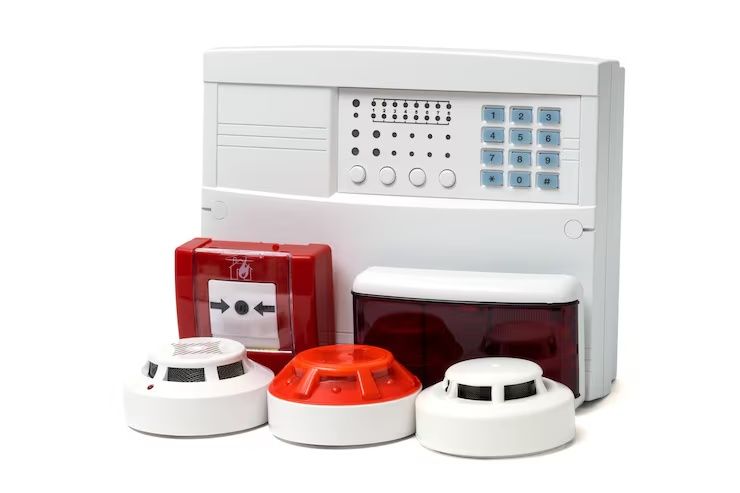The hearth alarm system is designed to detect and notify people of a building approximately the presence of fire, smoke or warmness. They play an crucial role in ensuring protection, lowering belongings damage and permitting timely withdrawal. Modern fireplace alarm systems upload detectors, manipulate panels and notification equipment to provide real-time notifications in the residential, industrial and commercial environment.
These systems exist as the risk of fire can increase rapidly, and early detection reduces damage, deadly and the risk of property damage.

Importance
Fire alarm systems are important for several reasons:
Life Security - Provides initial warnings, which allow living people to evacuate safely.
Property reduces fire -related damage by consuming officials and triggering oppression systems.
Compliance compliance - many building code and safety standards provided a mandate to fire alarm mines.
Integration - Modern systems can connect to sprinklers, emergency lighting and building management systems.
Peace of the mind - Living and Property Managers gain confidence, and knows that security measures are known.
Effective fire alarm systems contribute to both safety and operating continuity.
Types of fire alarm systems
Traditional system - Divide buildings in areas; Detectors trigger specific alarms for each area.
Address - Identify the exact location of the trigger detector, provide more accuracy.
Wireless system - Use radio communication, ideal for buildings where wiring is challenging.
Integrated system - Mix fire alarms with safety, building automation and emergency systems.
Manual conversation point - Allow those who live in emergencies to activate the alarm.
Each type meets separate building requirements and security settings.
Newer updates and development (2024–2025)
Four alarms continue to grow:
Smart Fireplace Alarm Competition Members hit more accurately on smoke and heat styles and reduce false alarms.
IoT-integration-ethnic time system associated with cloud platforms for tracking and removing signals.
Multi -tenderer mixed smoke, heat and gasoline detection for safety.
Use of recycling and additives with little vomiting in environmentally friendly materials.
Regulatory updates - new standards for installation, safety and testing in residential and commercial homes.
These trends beautify reliability, connection and stability in chimney security.
Laws and regulations
Fire alarm systems are subject to local, national and international regulations:
Building code - Specify the installation requirements based on building type, size and coating.
Security Standards - NFPA (National Fire Protection Association) and Isos provide global guidelines.
Inspection and maintenance rules- Regular test and service systems ensure functionality.
Exercise requirements - different rules are available for residential, commercial and industrial facilities.
Reporting of compliance - Fire occurrence in some areas requires logging and analysis.
These rules ensure that the system is effective and legally obedient.
Tools and resources
Accessories and resources for fire alarm systems include:
Four Alarm Control Panel Guide - Manual interpretation of configuration, monitoring and maintenance.
Test equipment - smoke generators, heat sources and simulators for periodic examination.
Professional Association - NFPA, Fire Security Council and local officials provide training and certificates.
Education material - online training programs, webinars and workshops on fire safety and system installation.
Inspection app - Software tool plan, track and document maintenance check.
These resources help professionals, convenience leaders and security enthusiasts in adapting fire safety measures.
Frequently requested questions
What is a fireplace alarm machine?
A fire alarm gadget detects hearth, smoke or warmness and indicators to ensure timely withdrawal and safety.
Why are fireplace alarms important?
They store lives, reduce belongings harm and make sure compliance with protection policies.
What kind of fire alarms are to be had?
Traditional, addressable, wi-fi, integrated structures and guide communique points are frequently used.
How regularly need to the hearth alarm device be tested?
Regular inspection is usually recommended, frequently quarterly or annually, based totally on rules and styles of building.
Can the hearth alarm be incorporated with other protection structures?
Yes, contemporary structures can connect with sprinklers, emergency lighting fixtures, protection and constructing automation structures.
Conclusion
Fire alarm systems are the cornerstone of modern safety infrastructure. Types, technical updates, criminal necessities and maintenance can make certain optimum safety for people and groups and assets with the aid of information pleasant practices. Informed approximately developments which include smart alarm, IoT integration and environmentally pleasant solutions help to growth each protection and efficiency inside the prevention of hearth.